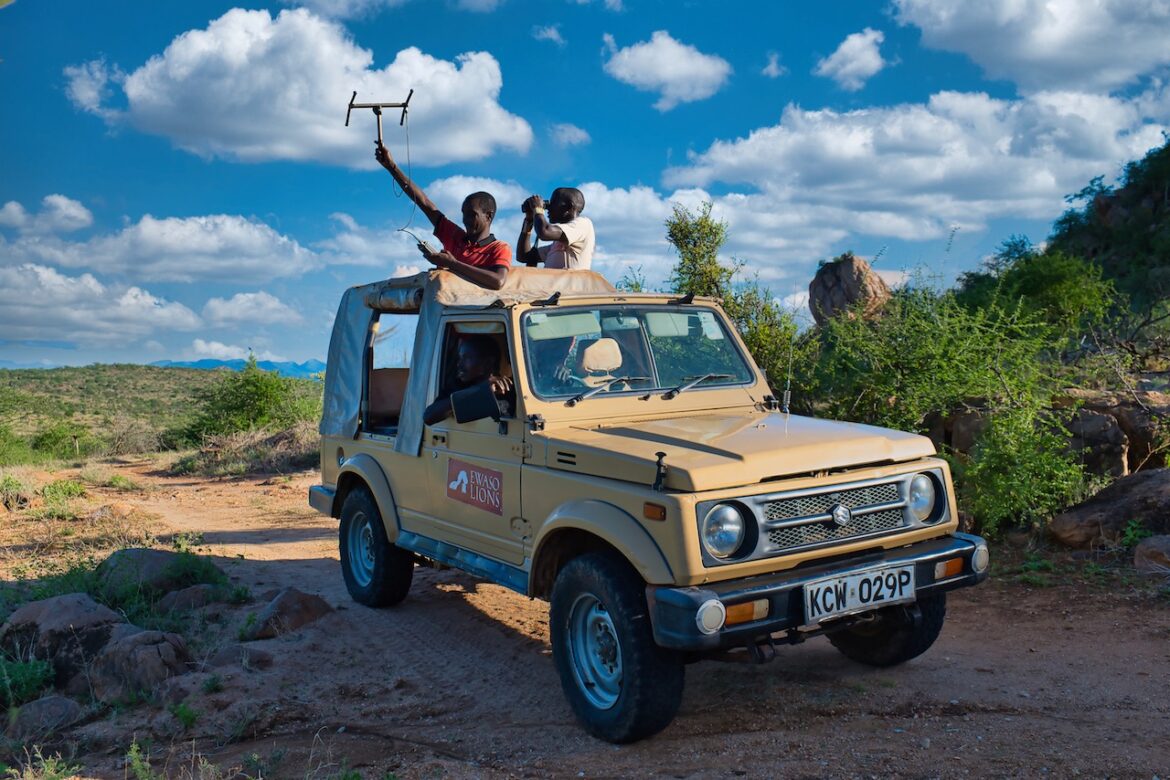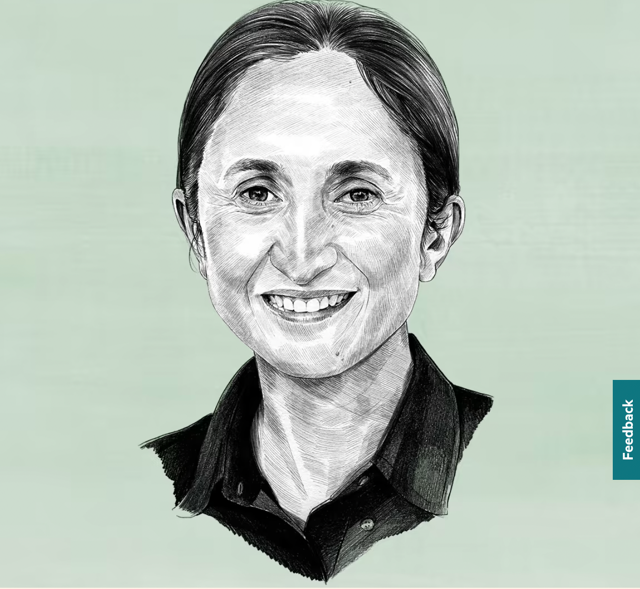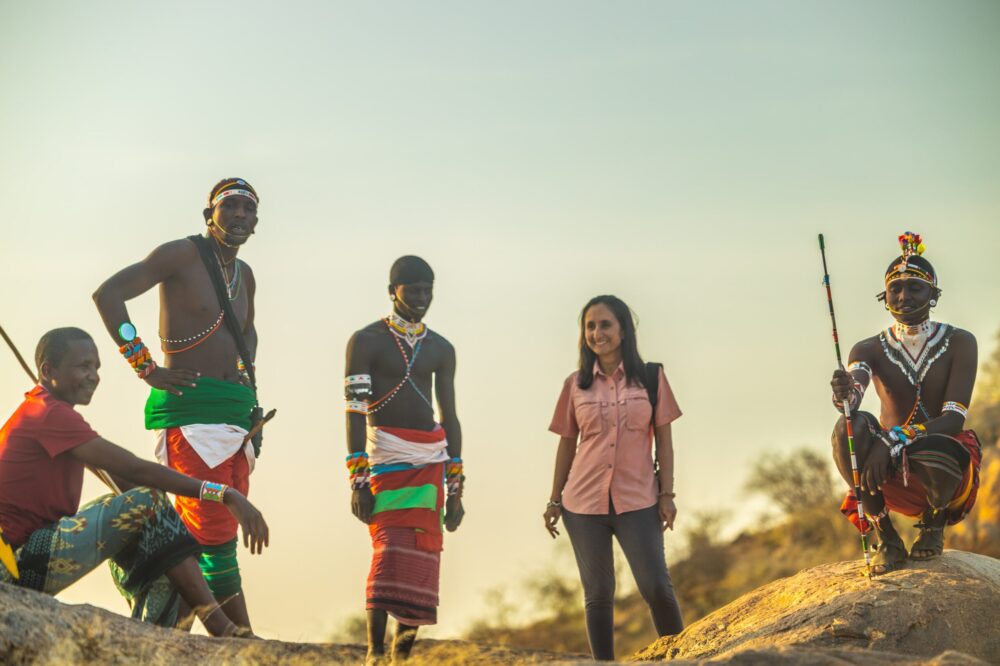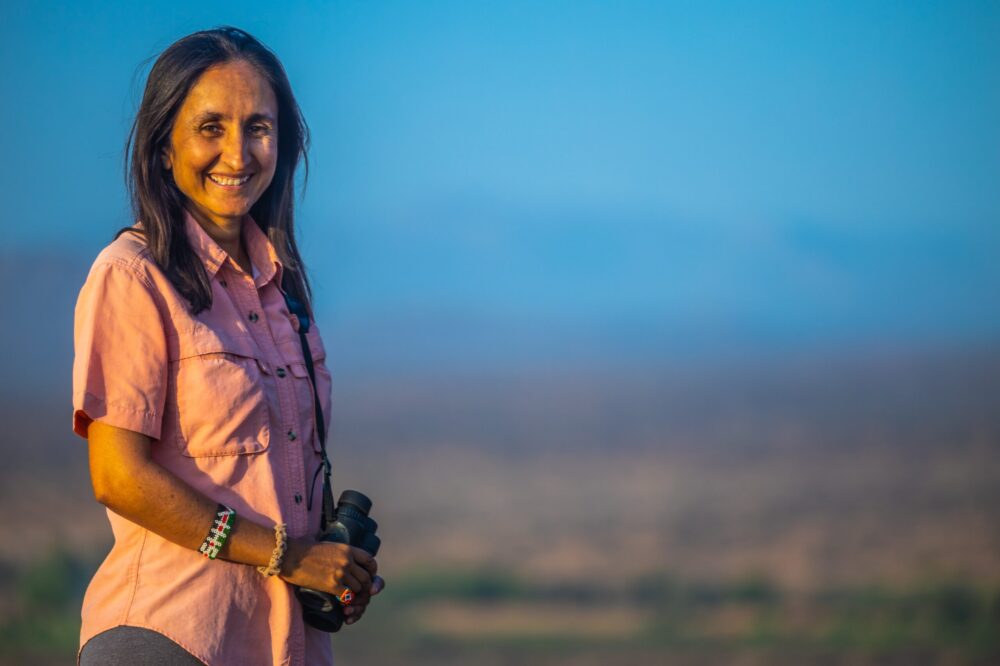Empowering local communities in Kenya to conserve lions
December 1, 2014
The African lion is a powerful flagship species synonymous with African rangelands; yet across the continent, lions and other great carnivores are disappearing at an unprecedented rate. Kenya is no exception to this grave trend, with the national population estimated at fewer than 2,000 individuals.
Here, like elsewhere in Africa, habitat loss and conflict with people rank amongst the most significant threats to lions. Rapid human population growth and encroachment into wildlife habitats have increased the incidence of human-lion interaction and conflict over recent decades. Conflicts, which can culminate in retaliatory persecution of lions, are often most pronounced amongst pastoralist communities for whom livestock depredation presents a significant actual—as well as perceived—risk to people’s livelihoods.
With anthropogenic threats central to the decline of the African lion, and with over 65% of lion range outside of formal protection (www.panthera.org), many believe that the success of carnivore conservation hinges on the involvement of local people. This is reflective of a broader shift in the conservation paradigm, where historical, largely top-down approaches that once disenfranchised local communities have been replaced by more integrated solutions that recognise local needs and empower communities to manage their natural resources and become more effective stewards of their environment.
In the Greater Ewaso Nyiro ecosystem of northern Kenya, the conservation organisation Ewaso Lions is working with Samburu communities, a semi-nomadic pastoralist ethnic group, to develop creative solutions to conserve lions and mitigate human-carnivore conflict. In this article, we present examples from Ewaso Lions’ portfolio of outreach activities, which are purposefully rooted in traditional cultural practices and are designed to build capacity and harness local expertise.
Warrior Watch
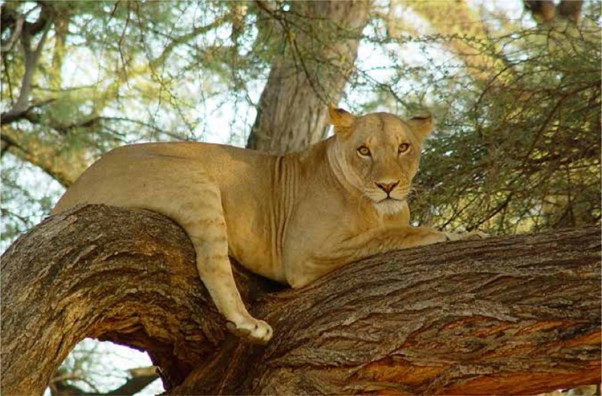 Nashipai in Samburu
Nashipai in Samburu
Morans, the warrior age-class of the Samburu tribe, traditionally play a central role in protecting their communities and livestock from external threats, including predation by lions and other large carnivores. Yet, these young men represent one of the most neglected groups in conservation management and decision-making in northern Kenya. Recognising this gap, Ewaso Lions Field and Community Manager and Samburu moran, Jeneria Lekilelei, came up with the idea for the Warrior Watch programme. Being a moran himself, he realised that his age class could potentially be the best ambassadors for conservation as they spend most of their time in wilderness areas. Jeneria described how “Warriors are the eyes and ears in the bush and involving them is key to the conservation and security of region’s wildlife and people”. Launched in 2010, Warrior Watch, therefore, encourages morans to become active wildlife ambassadors and to improve community awareness and tolerance for lions and other carnivores.
The programme intentionally builds on morans’ traditional protection role by increasing their capacity to mitigate human-carnivore conflict. Morans reinforce livestock enclosures, teach herders good husbandry and communicate the message about the value of lions to their peers. Equally, through the incorporation of a participatory monitoring scheme, Warrior Watch leverages morans’ wide-ranging presence in wildlife areas to monitor threatened species and record conflict incidents, ensuring the collection of information that is critical to successful conservation monitoring and research over a far greater geographical scale than could be achieved by Ewaso Lions’ staff alone. To fulfil their role, Warrior Watch participants receive ongoing training in wildlife ecology and conservation, conflict mitigation techniques and basic data collection (including the use of GPS devices). Although provided with small food stipends, it is education which forms the principal incentive for participation, with many of these formerly non-literate morans now able to read and write and, vitally, to complete their own wildlife monitoring and conflict reports.
Despite the programme targeting only a small sub-section of the population (15 morans across 3 conservancies) and offering negligible financial rewards, an evaluation conducted in 2012 revealed how Warrior Watch had already gained widespread community support and significantly influenced local attitudes towards, and tolerance of, predators within the two year period following its launch. As so few morans are directly engaged in the programme, effective dissemination has been critical to this success, with participants sharing their knowledge and skills widely amongst other morans and members of their community.
The evaluation further revealed how Warrior Watch has been instrumental in empowering the moran demographic both politically (by increasing participation in conservation and associated decision-making) and socially (by enhancing respect for morans and building social capital). This empowerment, coupled with an increased understanding of the importance of carnivores and knowledge of wildlife-friendly conflict reduction strategies, is believed to have galvanised community support in the absence of significant monetary incentives. Although a formal evaluation of the ecological impacts of Warrior Watch has not been undertaken, in 2013 alone, Warrior Watch morans prevented lions from being killed on eight separate occasions, emphasising the conservation potential of this programme.
Wazee Watch
Samburu wazee (elders) are respected leaders who, in contrast to the moran demographic, are traditionally recognised as central decision-makers with a great capacity to influence change within their communities. Accordingly, the practices and decisions made by the wazee have a greater likelihood of being adopted than those enacted by other groups.
Despite the Warrior Watch programme’s success in mitigating incidents of human-carnivore conflict, limited communication across the wazee and moran demographics has hindered effective collaboration between the two groups. Jeneria, recognising this shortfall, felt that engaging the elders would be critical to continued conservation success within the area. Wazee Watch was, therefore, launched in July 2013 to capitalise on elders’ influence within communities and to provide a platform for intergenerational discussions about wildlife. Ewaso Lions meets with the eight wazee every two months to discuss challenges in conservation and often to seek assistance from the elders in various forums, related to security or conservation. The wazee also strive to reinforce the conservation message, representing Ewaso Lions at community meetings and supporting Warrior Watch morans in their efforts to diffuse potential conflict situations and to educate the community on the importance of carnivores. Consequently, the programme has the potential to further increase social capital, as warriors and elders unite to achieve this shared conservation goal.
Mama Simba
As is common amongst pastoralist communities, gender roles within Samburu society are strongly marked, with women typically assuming responsibility for the household and not participating in decision-making at the community level. By virtue of their role fetching firewood and water, building and maintaining the homestead (manyatta) and tending to livestock (especially goats), they are central users and managers of natural resources and also frequently come into contact with wildlife.
Moreover, whilst elders and warriors are away with cattle, especially during the dry season, women often remain within the village. Consequently, they must deal with human-carnivore conflict first-hand should a predator attack livestock inside their village at night. Yet, Samburu women—like morans—have rarely been actively included in conservation activities in northern Kenya.
The Mama Simba (‘mother of lions’) programme was launched in September 2013 within Westgate Community Conservancy to harness women’s enthusiasm to participate in conservation and to fulfill their requests for education. Mama Simba equips women, who have limited exposure to conservation issues, with the knowledge and skills needed to reduce their environmental impact, effectively conserve wildlife and ultimately improve livelihoods.
Firstly, the programme delivers workshops informing women of the importance of conservation and sustainable practices and offers hands-on training in the identification of wildlife (including identification of carnivore tracks). Secondly, as part of a wider initiative entitled Boma Watch, it works with women to enhance livestock protection within the manyatta, encouraging reinforcement of livestock enclosure (bomas) with thornbush to restrict entry by carnivores, and enlisting their support to test and monitor experimental deterrents, such as ‘Lion lights’. Thirdly, the programme offers an alternative source of income, by commissioning the women—renowned for their exceptional beadwork skills—to make authentic beaded lion figurines. Ewaso Lions purchases these handicrafts directly from the women who make them, before selling them at international forums.
Finally, through Mama Simba’s educational arm, the programme teaches women to read and write. Acquiring literacy not only facilitates their participation in conservation-based activities but also empowers women in other aspects of their life, including their beadwork, food and livestock trade businesses. Anecdotal evidence further suggests that the women feel a strong sense of ownership and pride in the work they do as part of the Mama Simba programme and are now afforded a greater say within their communities. It is anticipated that the Mama Simba programme will be evaluated in the future using an evaluation toolkit created for the project.
Lion Kids Camp
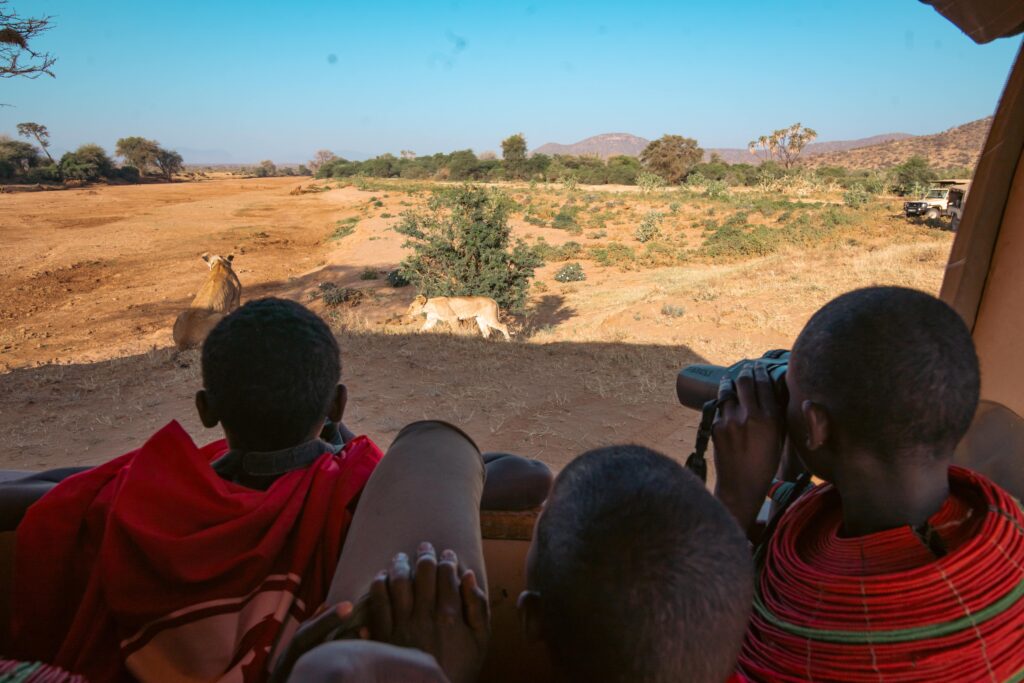 Children attending one of the Lions Kids Camps.
Children attending one of the Lions Kids Camps.
Despite living in close proximity to world-famous National Parks and Reserves, children in rural Kenya are rarely afforded the opportunity to observe wildlife at close range and to experience what attracts numerous tourists to their country each year. Instead, children’s perceptions of wildlife are shaped by largely negative interactions: for example, an elephant chasing a woman as she fetches firewood, a donkey mauled by hyenas, or the remains of a camel following an attack by lions. Since attitudes formed early in life tend to persist, environmental education aimed at children has great potential for fostering values and behaviours that support long-term conservation objectives and the development of a new generation of wildlife ambassadors.
The Lion Kids Camp is a four-day residential camp hosted by Ewaso Lions in collaboration with The Safari Collection tourist company. After securing their place in the camp through a creative arts competition, children from local primary schools are taken on game drives and bird walks, shown how to use binoculars and cameras; they listen to lectures from local conservation groups and perform in a wildlife conservation-themed drama competition.
An independent evaluation found that the inaugural Lion Kids Camp had not only provided children with a positive and enjoyable experience of wildlife but had significantly improved children’s knowledge of wildlife and conservation issues, the greatest change observed in those children with a lower baseline level of environmental education. Encouragingly, in the questionnaire surveys that followed the camp, all the children agreed that they would be sad if there were no lions in Samburu. Using the results of the evaluation, subsequent camps will continue to nurture our future rangers, wardens, tour guides and field officers.
Lion Watch
Lions and other large carnivores are a major lure to tourists, with thousands of visitors heading to the National Reserves and Community Conservancies which comprises Ewaso Lions study area each year. In order to better engage the tourism industry in lion conservation and effectively exploit the knowledge and presence of safari guides and their clients, Ewaso Lions launched its citizen science project, Lion Watch, in April 2013.
Through Lion Watch, 20 professional guides and rangers, the majority of whom hail from local communities, have received advanced training in the identification and ecology of the region’s lion population and learnt how to monitor the species using identification cards, aging books and a specially designed smartphone app. The programme thus serves a dual function: firstly, it greatly increases the spatial scale of lion monitoring as guides record lion sightings during game drives and secondly, it promotes a richer tourism experience for visitors, who are also encouraged to upload their own photos to an online database. To date, more than 500 lion sightings have been recorded by guides within Samburu and Isiolo Counties, with this vital data contributing to evidence-based conservation decision-making.
Conclusion
Ultimately, Ewaso Lions believes that by integrating decisions and information from the local people who share the landscape with lions into conservation, we are better equipped to understand and conserve the lion population. As our programmes illustrate, current knowledge of lion conflict and movement on the ground can lead to effective community-owned solutions to human-carnivore conflict. In addition, our programmes support the idea that local incentives for conservation are multi-dimensional and the success of community-based conservation need not necessarily rely upon financial instruments. Instead, our approach recognises the importance of political and social benefits in the form of increased equity and empowerment and encourages local ownership of wildlife conservation practices. We firmly believe that this approach has helped galvanise community support for conservation and, in turn, ensured that the lion population within our study area is now stable and has increased to its highest number in a dozen years.


